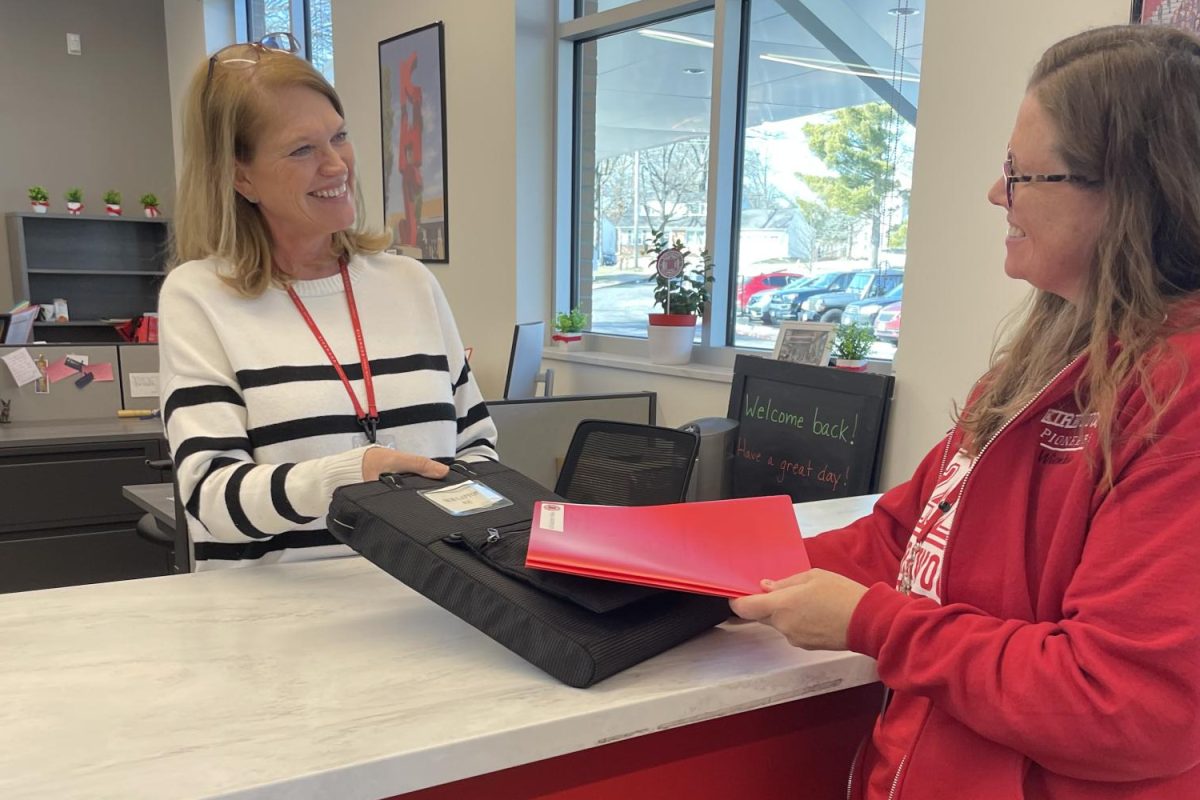
Committing to attend Drake University this coming fall, Emily Suchanek, senior, is planning to pay for college through both student loans and Drake’s Presidential Scholarship which is automatically offered to students who have been accepted by March 1. This popular scholarship gives students anywhere from $8,500-$14,000.
“I didn’t really have a first choice as to where I wanted to go,” Suchanek said. “For me, it just depended on where I could get the most money, and it all just easily fell into place for me.”
Seniors who plan on taking out student loans fill out the Free Application of Federal Student Aid (FAFSA). If and when students fill out this application, they will find out how much money the government can provide them during their time at college.
“What the FAFSA is ultimately trying to do is to come up with an estimated family contribution toward your college education as a whole,” Abby Peterson, KHS college counselor, said.
Determining how much money a student receives through student loans is based on their interest in school, whether a student is coming from in state or out of state and a family’s savings, investments and incomes over the years.
“The government is definitely more likely to loan you or grant you more money with the more expensive schools,” Peterson said. “The more expensive schools will be the most generous, but it’s the future you have to think about.”
In the past, students who have graduated college and have taken out student loans had up to 40 years to pay them off. According to Peterson, students today have six months after they graduate college to start paying off their loans. With those six months to get a job and save money, students will have 10 to 15 years to pay their loans.
For Suchanek, the federal government will provide her with money through a work-study. A work-study is having a job at school to contribute to help pay off her tuition. As of now, Suchanek does not know where she will be working.
“The work-study, in a way, has the same process and result as taking out student loans,” Suchanek said. “Instead of having to pay them off after I graduate, I’ll be able to pay off the loans through working, which works out perfectly for me.”
When taking out loans, a student can only expect the government to take off some of their tuition. If a student plans on going to graduate school, their undergraduate loans (if they have them), will be put on hold until they finish graduate school and officially graduate. The difference between undergraduate and graduate loans is that the student can take out full tuition for graduate school.
“It gets extremely tricky and difficult when you put grad school into the picture,” Peterson said. “It’s why you want to try and get as many scholarships and grants as you can so if you do take out graduate school loans, you’re not drowned in them when you graduate.”
According to Peterson, student loans and finding the school which will provide the most money is all part of the long process. Even though it is more cost-efficient to pay with scholarships and grants, she sees seniors and their families taking out student loans more and more.
“It’s why I tell students to start looking at colleges as soon as possible and get your testing done as early as you can,” Peterson said. “It eventually all falls into place and in the end, you want to find the school that’s best for you.”
Rise from the rankings
Considerations for the college curious









